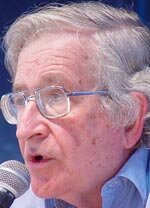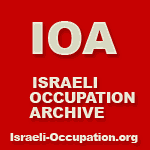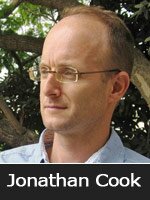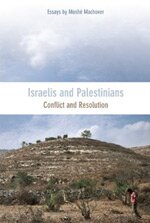By Qasem Qasem, Al-Akbar – 5 Sept 2011
http://english.al-akhbar.com/content/“return”-plan-al-bared-displacing-displaced
Rumors about the fate of the Nahr al-Bared Palestinian refugee camp began to circulate following its destruction by the Lebanese army in 2007. WikiLeaks documents now reveal that one of the options secretly discussed was to relocate the camp’s residents to the West Bank, possibly the newly constructed Rawabi urban complex.
A WikiLeaks cable issued by the US Embassy in Bucharest on 15 May 2008 reads: “Finally Dobre shared ‘sensitive information’ obtained by Romania’s Ambassador in Beirut regarding plans for relocating the Nahr al-Bared refugee camp to the West Bank. Dobre said that there was Saudi support for moving the camp out of Lebanon, and he underscored the critical conditions for the 35K-plus refugees. He asked if the U.S. had any information that could be shared.”
The information requested by Mikhail Dobre, Director of Middle East and Africa at the Ministry of Foreign Affairs of Romania, from a diplomat in the US Embassy in Bucharest was intended to ensure coordination with the US Department of State. As the cable indicates, the Romanian foreign ministry “would like a U.S. opinion on these issues in order not to get out of synch [sic.] with us or upset ongoing negotiations,” the latter in reference to “peace” talks.
In the same cable, the US diplomat requests guidance from the State Department on three issues Dobre discussed: “Palestinian Authority (PA) military cooperation agreement, views on PA’s interests in the Mediterranean Partner Countries (MPC) or other regional arrangements, and the Nahr al-Bared camp issue to share with the Government of Romania (GOR).”
This is an indication that talk circulating in the camp at the time of a relocation scheme was not merely a rumor; This plan, which won Saudi approval, was being discussed by four parties: the Lebanese government headed by Fouad Siniora at the time, the PA, the US administration, and the Saudi kingdom. Thus, Siniora’s slogan “temporary displacement, definitive return, and certain reconstruction” is rang hollow according to this cable. Siniora and Abbas Zaki, PLO representative in Lebanon during the war on the camp, provided false assurances to the refugees in order to persuade them to leave the camp. Thus, the camp was emptied of its residents, which allowed the Lebanese army to carry out a systematic destruction of the camp. The declared goal of the army at the time was to arrest the Fatah al-Islam fighters in the camp.
Nahr al-Bared residents witnessed the destruction of their camp on television for three and a half months. The Lebanese army then announced the end of its military operations on the ground, declaring the camp a military zone. Those months revived memories among the Palestinians of other camps in Lebanon which were completely destroyed.
Residents of Nahr al-Bared had taken refuge in other Palestinian camps. They waited until they were given permission to visit the camp in order to check on what was left of their belongings. Sadly, they discovered that their camp was completely destroyed. This is why they emphasized the importance of reconstructing the camp, given that other camps could no longer accommodate them.
Several resolutions were proposed pending the convening of international conferences that would discuss the reconstruction of the camp. Local and international meetings and conferences were held in order to present a new vision for the reconstruction of the camp. Committees of local, international, and Lebanese army architects were formed.
The Lebanese government wanted the camp to be reconstructed to allow for wider roads that would facilitate the passage of military vehicles if future confrontations occur. Others suggested to Palestinian officials, whose names remain undisclosed, that the camp be moved to a completely different location. Relocation here did not necessarily imply keeping it inside Lebanese territories, for the plan was to move the camp to the West Bank, as the WikiLeaks cable [08BUCHAREST374] indicates.
At the time of the Vienna conference (July 2008) and the beginning of the reconstruction process, the relocation of the camp was still being promoted. A Palestinian official, who is highly familiar with the Nahr al-Bared file, says that, in a meeting with a minister in Sinoira’s government (whose name he would not reveal), “relocating Nahr al-bared refugees to the West Bank was suggested. And we, as a government, would pressure the international community, the same way we did when Israel deported some Palestinians to Marj al-Zuhour. Thus, we would have contributed to implementing the Palestinian right of return!”
Of course, the minister ignores the fact that Nahr al-Bared residents are 1948 refugees. If they ‘return’ to the land under Palestinian Authority, they would be deprived of their real right of return to their original land occupied in 1948. But let us assume that 35,000 refugees will be relocated from Nahrd al-Bared to the West Bank: Where would they live, particularly that the West Bank is already over-populated?
We posed that question to a prominent official in the Coalition of Palestinian Forces, who preferred to stay anonymous. He had participated in negotiations about the fate of the Nahr al-Bared refugees during and after the war on the camp. He reaffirms that such suggestions were indeed made. When asked where 35,000 refugees would live in the West Bank, he laughed and said: “Don’t worry. They are building them a city”.
Apparently, he was referring to the Rawabi city project under construction between Ramallah, Nablus, and occupied Jerusalem. It may be a coincidence but the official webpage of the project indicates that it can accommodate 40,000 people. The Palestinian official adds: “The discussion was about relocating Nahr al-Bared refugees to that city. Then, it can be suggested that the right of return to Palestine was implemented, which reduces pressures on Israel.”
Bashar al-Masri, CEO of Bayti, the company working on constructing the city via email denied in an email interview with al-Akhbar allegations that the city is being constructed to resettle Palestinian refugees in Lebanon. He says: “The city of Rawabi, like other Palestinian cities, is not intended for the resettlement of refugees. It will be built to meet the acute shortage of apartments currently in Palestine (under the Palestinian Authority). World Bank studies have estimated the shortfall at more than 200,000 housing units, expected to reach 400,000 housing units in the next ten years.”
Rawabi: A number of obstacles hinder the construction of the city of Rawabi, one of which is the main road connecting it to other Palestinian cities. The fate of this road was linked to political negotiations and the permission to construct it has not been given. In addition, the import of essential building materials, which Palestinians use for all construction, is a major hindrance. For instance, 95 percent of cement and sand used by Palestinian contractors in construction is imported from Israel, which controls the amount of material imported.
























